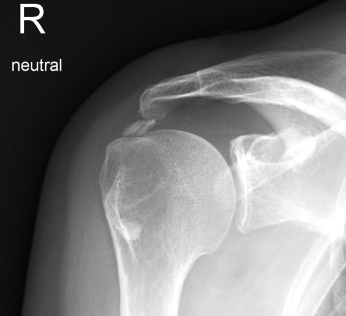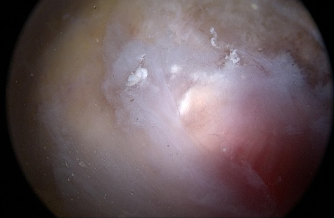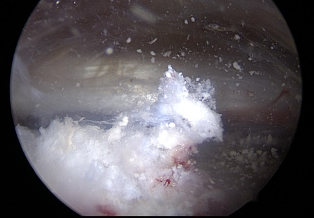Tendinitis Calcarea / the Calcified Shoulder
Calcified shoulder is a disorder of mid-life in which calcified deposits occur in the rotator cuff (tendon cap) of the shoulder.
Symptoms of Tendinitis Calcarea / the Calcified Shoulder
Are you between 30 and 50 years old and have you been suffering from mild symptoms of varying intensity for a long time? Or have you recently had a sudden attack of pain for no apparent reason, sometimes with severe pain for a few days to a few weeks? Do you feel the pain in the shoulder area radiating into the upper arm? Then you have the typical symptoms that can indicate a calcified shoulder.
Examination of the Calcified Shoulder
After inquiring about your medical history, you will be given a physical examination. Here the extent of movement and the strength of your shoulder are examined and specific tests are carried out. The disease is then confirmed by a standard x-ray examination.

Treatment:
For the calcified shoulder, both conservative and surgical treatment may be appropriate, depending on the size and location of the calcified area.
Conservative treatment includes subacromial infiltration (injection under the acromion), which can at least temporarily relieve the pain. Physiotherapy can also provide support.
More targeted is the so-called needling of the calcium deposit, in which the calcium is punctured under sonographic control with the aim of opening up the calcium deposit and then allowing it to be decomposed by the body.
The safest way to remove limescale is the surgical procedure. We perform this operation using the keyhole technique (arthroscopic). In this procedure, the calcific deposit is opened under visual control and the calcific material is removed from the tendon with a spoon (curette). The material can then be suctioned off with a special instrument (shaver).


Aufenthalt im Spital
Der arthroskopische Eingriff wird stationär durchgeführt. Üblicherweise werden sie am Operationstag selbst ins Spital eintreten. Der Austritt erfolgt dann am Morgen nach der zweiten Nacht, sofern es ihre Schmerzen zulassen.
Nachbehandlung
Nach Austritt aus dem Spital sollten sie eine ambulante Physiotherapie (2x/Woche) zur Mobilisierung der Schulter und später zum Kraftaufbau durchführen. Die Verordnung dazu werden sie mit ihren Austrittsunterlagen erhalten. Häufig kann die Behandlung bereits nach 3-4 Monaten abgeschlossen werden.